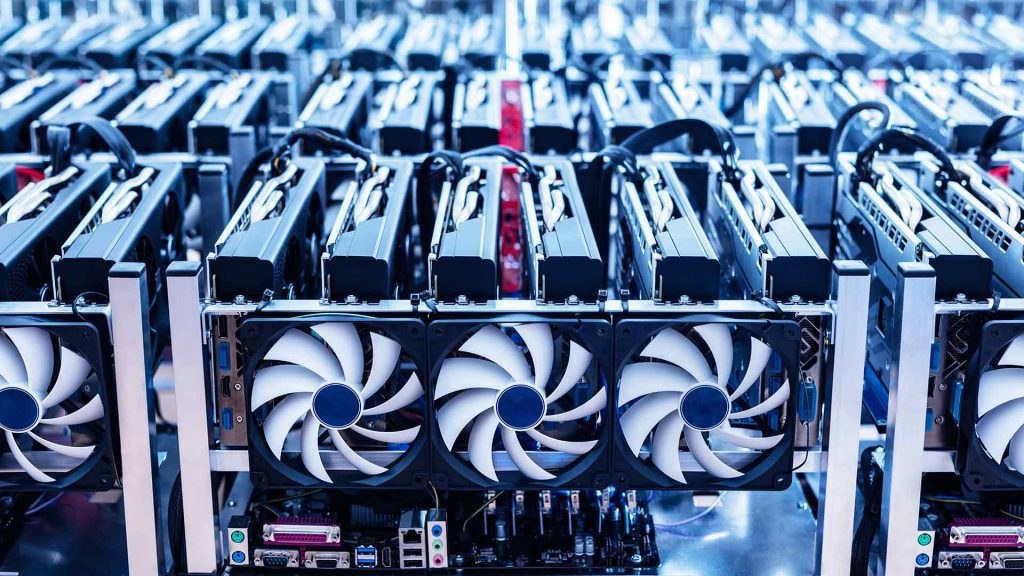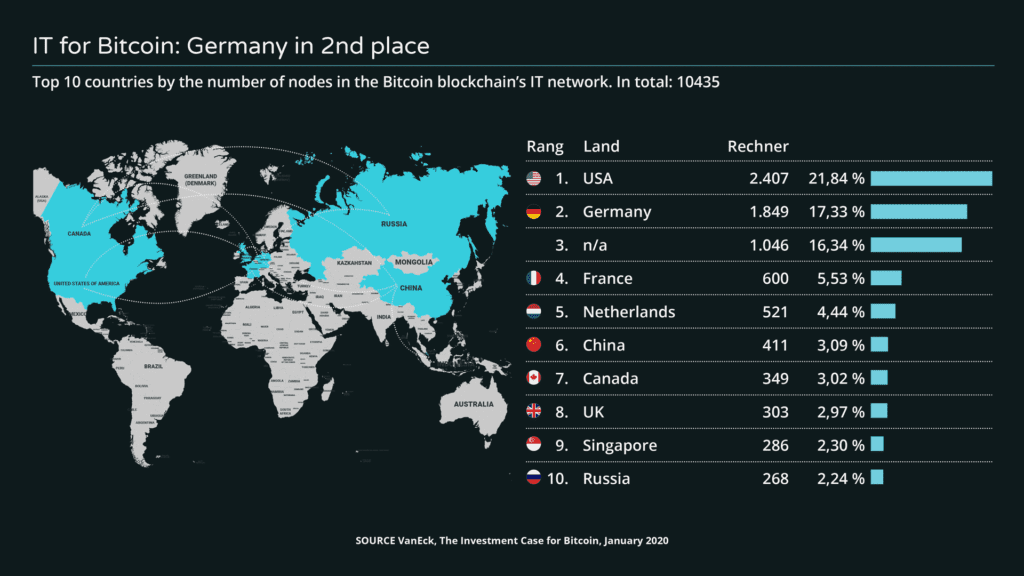The term “mining” has become an integral part of terminology pertaining to both Bitcoin and cryptocurrency in general. The coining of the term introduced a concept from the mining industry into the IT world. The image portrayed here, however, describes the actual process rather inaccurately. Bitcoin is not sought after and found like a precious metal. Rather, the operators of IT infrastructure are rewarded with Bitcoin for their computing services.
What Many Believe “Bitcoin Mining” Means
Nowadays, the public seems to be getting the idea that Bitcoin is a monetary digital currency that you can produce with your own computer. How else should one construe reports about mining farms in Iceland, China, or Canada? They talk about entire factory halls or tunnel systems in which thousands of computers are in operation. These machines run without interruption and seem to suggest the computation of Bitcoin. The ideas don’t end there: Is it true that anyone can convert their own computer to mine Bitcoin? Has the legendary money-printing machine finally been invented for home use? The answer may be disappointing: In principle, yes, but unfortunately not really. Everyone can participate in the Bitcoin blockchain IT network. So, theoretically, you can run a mining computer at home. But “printing” heaps of monetary Bitcoin with it –– that’s rather unlikely.
What Bitcoin Mining Really Is
No Bitcoin is calculated on the computers at mining farms, which are designed for Bitcoin mining. Instead, the operators of these computers receive a fixed number of Bitcoin as a reward or remuneration for operating the Bitcoin blockchain.
In order to understand what happens on mining PCs, one must take a closer look at Bitcoin technology. In principle, Bitcoin is not in any way a virtual coin; a Bitcoin consists, put simply, of an entry in an extremely encrypted database –– the Bitcoin blockchain. This entry documents a transaction and consists of three pieces of information:
- The wallet address of the sender’s Bitcoin account
- The wallet address of the recipient’s Bitcoin account
- The quantity of Bitcoin sent
An entry is encrypted so that it cannot be changed. Then, mining computers confirm the accuracy of the transaction based on cryptographic procedures. Finally, the entry is then stored in a block in the Bitcoin blockchain.
This blockchain is actually a single database; it’s an entity that is updated, checked, and mutually confirmed by every computer in the Bitcoin network (the miners). All mining computers, also referred to as nodes, work with this one identical, non-manipulable database. Currently, the database has a size of 250 GB. The mining machines work to maintain the Bitcoin network by checking, validating, and encrypting transactions. To do this, they calculate new blocks in which transaction information is stored and cryptographically sealed. For the computing power required for this work, they receive a reward. This process is called proof-of-work: By calculating and solving complex cryptographic tasks, they confirm that the activity was actually performed.
Miners Receive Bitcoin as Compensation, but the Reward Is Dwindling
For each calculated block in the blockchain, miners are credited with a number of Bitcoins. These are then regenerated by the system. At the beginning of the Bitcoin blockchain, the compensation for mining a single block was 50 BTC. After 4 years, this amount had dropped to 25 BTC, then to 12.5 BTC, and since May 11, 2020, it’s only been 6.25 BTC. This respective halving is automatically carried out by Bitcoin’s software to compensate for the performance of the computers, which has been improving over the years. It also limits the growth of available Bitcoin. Inflation due to an essentially unlimited and, in fact, continuously increasing money supply –– a problem of the analogous “real” money world –– must thus be contained.
With that said, mining is ultimately executing cryptographic operations on networked computers in order to update and record the contents of a single, large database in a tamper-proof manner. These operations require computing power that can be physically mapped –– mapped as the consumption of electricity and as cleverly designed chips and hard disks.
Mining Is the Work of Computation Machines. This work Is Compensated –– with Bitcoin.
Can I "Mine" Bitcoin at Home?
Generally, anyone can operate a computer that is part of the Bitcoin network and provides services through computing operations. To do so, the Bitcoin blockchain must be installed and the computer must be networked. However, with a normal PC, you shouldn’t get your hopes up about getting close to what is needed to receive Bitcoin for this service. With your home PC, you are only a very, very small light in the world of Bitcoin miners. Up against the computing power of giant data centers, you probably don’t stand a chance. You’ll probably need quite a long time to gain a reward for processing a block.
Links
You can download the Bitcoin blockchain’s complete software here: bitcoin.org/en/download

